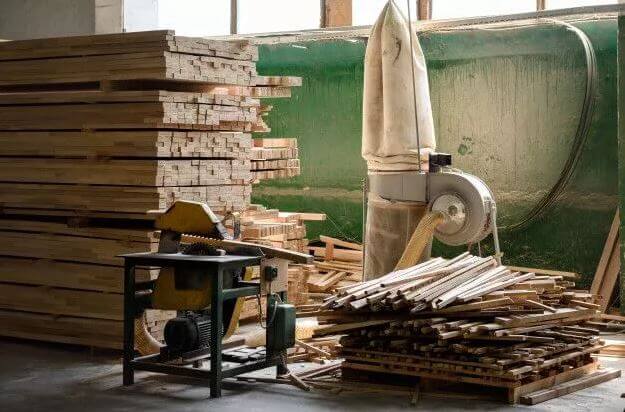The 15 Forklift Safety Tips To Avoid Injuries
The forklift is among the most frequently employed pieces of equipment at the job site. These industrial trucks powered by electricity can be used to lift and move items with precision and dexterity. Forklifts can be powerful, but there are risks associated with operating any industrial equipment. With more than one million forklifts operating, it is vital to ensure that workers are educated on the correct safety precautions for forklifts.
The Occupational Health and Safety Administration (OSHA) estimates that forklift accidents result in 34,900 serious injuries as well as 85 fatal accidents each year. The most alarming part is that 25 percent of these incidents result from poor education, which highlights the importance of informing everyone on the crucial safety guidelines of operating a forklift safely.
Also Read: Managing Pallet Supply Chain Through Technology
If you are able to brush up on your forklift safety Your team and you can rest assured that the safety of construction sites is of paramount importance. Click here for a quick reference to the most important details regarding safety forklifts.
- OSHA Forklift Safety Rules
- Forklift Safety Tips
- What Are the Main Causes of Forklift Accidents?
- Forklift Pedestrian Safety
- How Can I Improve My Forklift Safety?
- Explore All Forklifts
1. Get Forklift Certification
As a lot of accidents are caused by inadequate forklift safety instruction and training, it is suggested that only those certified and certified in accordance with OSHA standards are responsible for operating the forklift. Employers should assess their employees their performance at least every three years, and also supplement training with safety videos for forklifts and lectures, as well as software training and demonstrations.
2. Wear Proper Clothing
Forklift operators must be outfitted in the correct safety gear such as safety shoes hard hats, hard shoes, and high-visibility clothing. It is important to secure loose clothing to avoid it from being caught by the forklift.
3. Know the Forklift Class
OSHA recognizes various forklifts and their classifications. Because each type comes with its own structure the weight limit, its structure, speed, turn radius, and use, it is essential to understand your equipment to ensure you follow the safest procedures.
4. Inspect the Equipment Daily
Forklifts should be thoroughly inspected prior to each use. Everyday checks with the shift supervisor are suggested to document any defects or issues. Equipment that needs repair shouldn’t be used.
These checks should be short and easy. Here’s a simple checklist for safety on forklifts that construction sites can use following OSHA’s recommendations.
- Test the operation of controls like lights, brakes, horn and the steering wheel.
- Make sure to inspect the overhead guard and mast for any damage.
- Check the levels of fluid and tire (hydraulic brake, hydraulic as well as coolant, fuel and).
- Examine for oil, water or leaks in the radiator.
- Check that the forks are good shape (e.g. straight, straight, no cracks, and no distortion).
- Check for any potential hazards.
If you are using a forklift complying with all workplace rules, signs or regulations can be of the utmost importance. Here are some guidelines to keep an eye on your working environment and safeguard your self and others at the workplace.
5. Maintain 360deg Visibility
Keep the forks close to the ground, allowing clear ahead vision. If the load blocks your view, use the machine in reverse. Always ensure that you have a clear image of your rack as you’re putting the load in place. Other best practices as defined in OSHA are:
- Always maintain Eye contact when you see pedestrians as well as other workers.
- Always keep an eye on the direction of travel.
- Make use of rear-view mirrors for better visibility
- Make use of headlights when you are working in the dark, outside or in areas where additional illumination is required.
- You can find the remainder of the guidelines from OSHA’s website. OSHA website.
6. Implement a Floor Marking System
Floor marking systems can to increase the safety of workers. Utilize yellow to identify the physical dangers, such as areas that are prone to fall or stumble and red to mark areas of fire hazards such as fire equipment and emergency switches. Place wayfinders and warning signs all over the area to ensure that pedestrians are away from paths forklifts use and guide forklifts on safe routes, and increase the flow of traffic overall.

7. Maintain Equipment Capacity
Make sure you are aware of the capabilities of your forklift, as well as the attachments that are used. Do not haul loads that exceed that of the machine’s counterweight. Due to the way in which forklifts function, overloading can result in the wheels of the back to lift above the ground and cause the entire machine to fall over. This could result in injuries to employees and cause damage to equipment and the materials.
8. Never Carry Extra People
Allow other employees to use the equipment together if a second seat is installed inside the forklift. Don’t employ the forklift to lift individuals, since forklifts are made to handle weights. If you must lift an individual, you should use an appropriate work platform that is secure and a safety cage for your forklift.
9. Pay Attention to the Forklift’s Stability
Before you use a forklift ensure your feet and hands are dry and that you sit in a comfortable spot and have all the controls in reach. As well as sitting safely, you should follow these steps prior to using the forklift in order to increase your security.
Every forklift has its own center of gravity, the point at which the weight has the same amount of force – that has in common with the weight that it carries. Forklifts are built around the three-point suspension system known as”stability triangle. “stability triangle,” which operators must adhere to in order to keep it from falling over. The more weight the load is it is, the farther away that the axis of gravitation gets from the load’s center which reduces the lifting capacity of your forklift.
10. Ensure Loads are Stable and Secure
When putting loads on the docks for loading, be certain to verify their balance. The load should be positioned inwards and keeping forks as short as is possible to ensure your equipment’s stability especially when using ramps. Utilize bindings or ropes to secure stacks as well as large loads, if needed as well as ensure that the pallets or skids have the right weight for the load.
11. Move at the Appropriate Speed
Use your forklift in accordance with the speed limits that are specified. It’s important to not stop, turn, or change directions in a sudden manner or speed up in sharp turns because these actions could cause the forklift to fall over. If your forklift begins dip, don’t try to leap over the machine. Experts advise staying inside the vehicle, grabbing the wheel and putting your feet in a brace.
12. Maintain a Safe Operating Distance
Be mindful of surrounding equipment at the site. Never operate a forklift the vicinity of other machines in the event of a need, and always maintain an appropriate distance that gives the space to stop safely and stay clear of other machinery that is operating in a manner that is unpredictable.
13. Avoid Hazardous Areas of the Equipment
Be careful not to walk or stand under the load, lifting mechanism or attachment for a forklift, since loads can be thrown off onto anyone who is beneath it. Make sure that your feet and hands remain from the forklift mast, since moving masts can cause serious injuries.
14. Refuel and Recharge the Forklift
It’s vital to keep the devices fully charged and fuelled. Make sure you recharge and refuel at specially designated areas where there is a good ventilation and free of flames. Be sure to turn off the machine each time you refill it.
15. Park the Forklift at the End of the Shift
When you finish your shift, ensure to place the equipment in approved and designated zones. The construction company must make sure that parking areas aren’t obstructed by walkways or block any access points or exits. Completely lower the forks until they are level with the floor. Then, use the brake for parking, then turn off the engine and take the key out of the ignition.
What Are the Main Causes of Forklift Accidents?
The main causes of accidents involving forklifts fall under three danger categories: user error, working environment or mechanical engineering. Lack of training for employees is responsible for a large portion of the forklift accidents. OSHA believes that as much as 70 percent of all forklift incidents could be prevented by the proper training.






